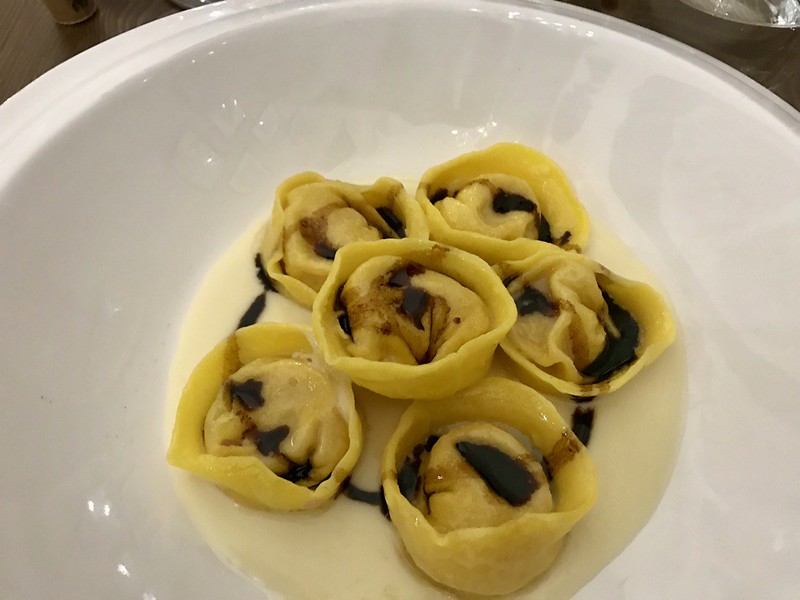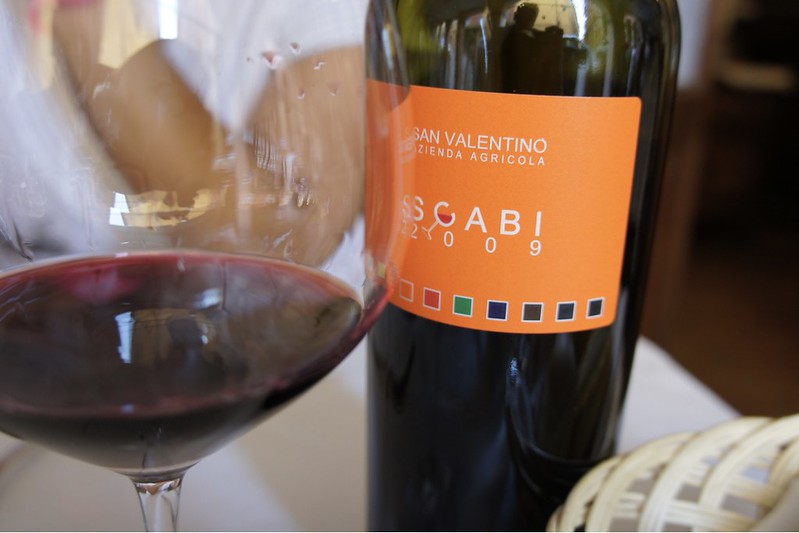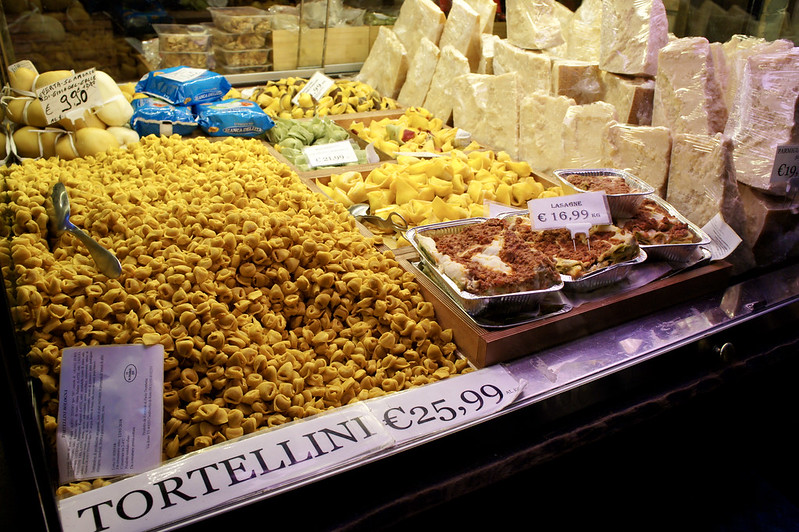If you pay even a tiny bit of attention to Italian food, it came as no surprise that the third episode of “Stanley Tucci: Searching for Italy” starred the gastronomic powerhouse of Bologna. This historic city in central Italy – home to the oldest university in the western hemisphere and an unfinished cathedral that was designed to outshine St. Peter’s in Vatican City – is famed for a cuisine that is so rich that locals affectionately refer to their hometown “La Grassa”, or The Fat Lady.
Bologna is the unrivaled capital of what is known as Italy’s Food Valley. This stretch of the ancient Roman Via Aemilia runs from Parma through the pretty provincial cities of Reggio Emilia and Modena before arriving at the pasta-laden tables of “La Grassa”. Set like jewels along the route are the epicenters of gourmet delicacies like Parmigiano-Reggiano, Prosciutto di Parma, Aceto Balsamico di Modena, and Lambrusco, all of which dominate the menus in Bologna.
Our dining experiences in Bologna have always been extraordinary. On our first trip we stopped in at a little osteria called Drogheria della Rosa. We sat outside under the portico and heard this gravely voice going on about something inside, who turned out to be the owner/chef, Emanuele. We ordered pasta al forno, which was unbelievable: a crisp outer layer and melting, pillowy sheets of pasta inside.
We had another great experience at Drogheria Gilberto, where we enjoyed an unforgettable balsamic vinegar tasting. We were astounded by this specialty that can’t possibly be worth the time it takes to produce, and a bit embarrassed by what we had been calling balsamic before. Patience is definitely rewarded when it comes to authentic aceto balsamico.
We love wandering and sampling all the great cured charcuterie paired local Sangiovese wines from the surrounding hills of Romagna. These small-batch boutique wines are surprisingly affordable and of excellent quality, but are hard to find outside of Emilia-Romagna.
It’s easy to wax on about Bologna’s endless culinary delights: luscious ribbons of fresh pasta tossed in a savory ragù; tortellini bursting with fresh ricotta or spiced ground meat; pistachio-spiked mortadella and aged culatello. You would be hard-pressed to sit through a disappointing meal in Bologna, but here are a few stellar dishes you should go out of your way to try on a future visit to “La Grassa“.
Best Antipasti (Starters) to Eat in Bologna
The antipasto, or starter, is the course most often kicked to the curb in Italy, where pasta and meat dishes take center stage and there’s always room for a creamy heap of tiramisù. In Bologna, however, some of the most iconic specialties are antipasto mainstays, so don’t skip the starter or you’ll miss out on a number of exceptional local delicacies from charcuterie to aged balsamic.
Prosciutto Crudo di Parma – The most famous charcuterie in Italy is prosciutto crudo, a dry-cured ham that is aged for around two years. The king of prosciutto is Prosciutto di Parma, each one branded with a crown so there is no doubt as to which ham reigns supreme. Prosciutto Crudo di Parma is made primarily in the town of Langhirano near Parma and is beloved for its delicate nutty and slightly sweet flavor.
Culatello di Zibello – Slightly more prestigious than prosciutto crudo, Culatello di Zibello is the cured ham made solely from the pork’s upper haunch, so there is more meat and less fat.
Mortadella – Older brother to the baloney you may have grown up with, Mortadella di Bologna stands head and shoulders above anything Oscar Meyer has ever put out. Made of finely ground pork and cubes of pork fat, Mortadella di Bologna IGP is only produced in the area around the city and can be flavored with whole black peppercorns or pistachios.
Parmigiano-Reggiano – If Prosciutto Crudo di Parma is the king of Italian charcuterie, Parmigiano-Reggiano is the queen of cheese. This umami-rich cow-milk cheese is aged from one year to more than three years in 100 pound wheels and stored in high-security aging and storing houses. Aged Parmigiano-Reggiano is often served as an antipasto drizzled with….
Aceto balsamico di Modena – One of the most precious (and costly) gourmet specialties in all of Italy, authentic balsamic vinegar is made from a reduction of Trebbiano and Lambrusco grape must that is then fermented in wooden barrels from a minimum of 12 to more than 25 years. This incredibly slow and labor-intensive process produces a uniquely aromatic elixir that pairs perfectly with aged Parmigiano-Reggiano.
Tigelle – What is a cheese and charcuterie platter without some sort of carbohydrate vehicle? In Bologna, your “affettati misti” will more likely be served with tigelle rather than bread. These small, round flatbreads are cooked on a frying pan or in a special two-sided tigelliera and served hot. You will sometimes come across tigelle served with “cunza”, a savory lard spread flavored with minced rosemary and garlic.
Gnocco fritto/crescentina – Don’t be fooled by the name. Gnocchi fritti aren’t gnocchi at all, but a simple diamond-shaped fried bread that puffs up when it is fully cooked and served hot with charcuterie or cheese. Sometimes called crescentina (“crescere” means to grow, referring to their expansion in hot oil), these simple but delightful treats should be eaten steaming hot with charcuterie or fresh Squacquerone di Romagna D.O.P., a mild, spreadable regional cheese.
Best Pasta Dishes to Eat in Bologna
Bologna is best known for its “pasta fresca” or fresh egg pasta, in all shapes and forms, from thin layers in lasagne to charming stuffed hat-like shapes bobbing in hot broth. Fresh pasta is such a culinary staple in the city that many traditional restaurants employ a corps of “sfogline”, or women who come in each morning to make the fresh pasta for the day. We met a retired 93-year-old sfoglina on one visit who worked as a ballerina before specializing in handmade pasta later in life.
Tortellini in brodo – There are two fundamental pasta dishes in Bologna, and tortellini in brodo is one of them. These bite-size rings of meat-filled pasta are served in an aromatic capon broth, sometimes dusted with a bit of Parmigiano-Reggiano. The fresh pasta is made simply from eggs and flour, and the filling is a mix of pork loin, prosciutto, mortadella, Parmigiano-Reggiano, eggs, and nutmeg in proportions that vary slightly according to the chef or mamma.
Tagliatelle al ragù – The other sine qua non for a culinary adventure in Bologna is a heaping plate of tagliatelle al ragù, a sauce so deeply rooted in the city that it is known as “Bolognese sauce” in the rest of the world. Despite the rich flavor, the dish is surprisingly simple: ribbons of egg-and-flour pasta fresca tossed with a meaty sauce that derives its satisfying nuances more from a lengthy cooking time (minimum a couple of hours) than exotic ingredients.
Lasagne verdi – Lasagne is a crowd-pleaser in any form, but Bologna makes a uniquely satisfying version that layers bright green sheets of spinach pasta with rich bechamel and meaty local ragù. If you indulge in lasagne anywhere in Italy, make it Bologna.
Gramigna con salsiccia – Less famous than Bologna’s other classic pasta dishes, gramigna with sausage is a beloved local staple in both homes and restaurants. The most traditional version pairs the short, curled tubes of egg pasta (either fresh or dried) with a simple sauce of little more than sausage, tomatoes, and “soffritto” (diced onion, celery, and carrot).
The Best Meat Dishes to Eat in Bologna
With endless antipasti that tempt and rib-sticking pasta dishes that must be sampled to be believed, you may find yourself running out of steam by the time your meal comes around to the meat course. If you still have room for one more dish, here are a couple of “secondi” worth trying:
Bollito misto – Brian is a particular fan of Bologna’s bollito misto, which is both a dish and a bit of tableside entertainment. Traditionally, your waiter will roll a cart up to your table to plate a selection of boiled meats (different cuts of beef, veal, pork, and tongue), a slice of potato, carrot, and celery from the same pot, and a mix of condiments and sauces. The most traditional sauces include salsa verde (green sauce made from parsley, olive oil, garlic, anchovies, and capers), salsa rossa (a sweet-and-sour tomato sauce), and mostarda (candied fruits laced with mustard seed oil). We enjoyed an excellent bollito misto at Caminetto d’Oro.
Cotoletta alla Bolognese – If bollito misto is a bit too much food and fanfare, opt for a simple cotoletta (breaded veal cutlet) that is first pan fried, then poached in hot broth covered with a slice of prosciutto crudo and a dusting of Parmigiano-Reggiano.
Polpette – Meatballs in Bologna include a small proportion of mortadella along with the traditional mix of ground beef and pork to lend an extra kick of flavor. You’ll find them most often breaded and pan-fried, though they are sometimes simmered in savory tomato sauce until tender.
Finishing Off Your Meal in Bologna
Our favorite way to finish off a meal in Bologna is with a sweet torta del riso for dessert. This historic sweet was once made specifically for the Feast Day of Corpus Christi and known as the “torta degli addobbi” (decoration cake) to mark the day locals would festoon the streets with colored banners. Today you can find these diamond-cut portions of firm rice pudding infused with lemon and almonds all year round.
And to help ease the digestion after La Grassa has shown us a good time at the table, we never forget a tiny glass of local Nocino. We love this walnut “digestivo” liqueur so much that we now make our own based on what we’ve tasted on past visits to Bologna.










